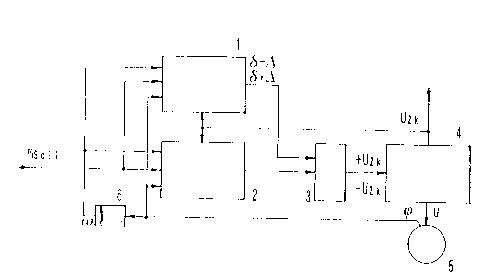Some of the information on this Web page has been provided by external sources. The Government of Canada is not responsible for the accuracy, reliability or currency of the information supplied by external sources. Users wishing to rely upon this information should consult directly with the source of the information. Content provided by external sources is not subject to official languages, privacy and accessibility requirements.
Any discrepancies in the text and image of the Claims and Abstract are due to differing posting times. Text of the Claims and Abstract are posted:
| (12) Patent: | (11) CA 2109068 |
|---|---|
| (54) English Title: | PROCESS FOR OPERATING PERMANENTLY EXCITED SINGLE-PHASE ALTERNATING CURRENT MACHINES |
| (54) French Title: | METHODE DE FONCTIONNEMENT DE MACHINES A COURANT ALTERNATIF MONOPHASE ALIMENTEES EN PERMANENCE |
| Status: | Term Expired - Post Grant Beyond Limit |
| (51) International Patent Classification (IPC): |
|
|---|---|
| (72) Inventors : |
|
| (73) Owners : |
|
| (71) Applicants : |
|
| (74) Agent: | GOWLING WLG (CANADA) LLP |
| (74) Associate agent: | |
| (45) Issued: | 2001-08-14 |
| (86) PCT Filing Date: | 1992-04-28 |
| (87) Open to Public Inspection: | 1992-11-12 |
| Examination requested: | 1999-03-19 |
| Availability of licence: | N/A |
| Dedicated to the Public: | N/A |
| (25) Language of filing: | English |
| Patent Cooperation Treaty (PCT): | Yes |
|---|---|
| (86) PCT Filing Number: | PCT/AT1992/000060 |
| (87) International Publication Number: | AT1992000060 |
| (85) National Entry: | 1993-10-22 |
| (30) Application Priority Data: | ||||||
|---|---|---|---|---|---|---|
|
The aim of the invention is to obtain a process for operating a perm-
anently excited single-phase alternating current machine which allows opti-
mal exploitation of the machine and economical design of the converter.
The process of the invention is characterized in that the effective value of a
phase current i of the alternating current machine at maximum torque can
be minimized by impressing certain shapes of a terminal voltage u, using a
converter. The optimal voltage shape, eg., sinusoidal, square wave or
mixed, is chosen in function of the operating range of the machine. The
process of the invention makes it possible for the first time to use a conver-
ter of economical design to supply a permanently excited single-phase al-
ternating current machine, such as a transverse flux machine, and in so do-
ing to turn all the advantages of this machine to account is a wide range of
applications.
Note: Claims are shown in the official language in which they were submitted.
Note: Descriptions are shown in the official language in which they were submitted.

2024-08-01:As part of the Next Generation Patents (NGP) transition, the Canadian Patents Database (CPD) now contains a more detailed Event History, which replicates the Event Log of our new back-office solution.
Please note that "Inactive:" events refers to events no longer in use in our new back-office solution.
For a clearer understanding of the status of the application/patent presented on this page, the site Disclaimer , as well as the definitions for Patent , Event History , Maintenance Fee and Payment History should be consulted.
| Description | Date |
|---|---|
| Inactive: IPC expired | 2016-01-01 |
| Inactive: Expired (new Act pat) | 2012-04-28 |
| Inactive: IPC deactivated | 2011-07-27 |
| Inactive: IPC deactivated | 2011-07-27 |
| Inactive: IPC from MCD | 2006-03-11 |
| Inactive: First IPC derived | 2006-03-11 |
| Grant by Issuance | 2001-08-14 |
| Inactive: Cover page published | 2001-08-13 |
| Pre-grant | 2001-05-02 |
| Inactive: Final fee received | 2001-05-02 |
| Notice of Allowance is Issued | 2001-02-23 |
| Notice of Allowance is Issued | 2001-02-23 |
| Letter Sent | 2001-02-23 |
| Inactive: Approved for allowance (AFA) | 2001-02-08 |
| Amendment Received - Voluntary Amendment | 2001-01-10 |
| Amendment Received - Voluntary Amendment | 2000-11-21 |
| Inactive: S.30(2) Rules - Examiner requisition | 2000-08-17 |
| Letter Sent | 1999-08-05 |
| Inactive: Single transfer | 1999-06-28 |
| Amendment Received - Voluntary Amendment | 1999-04-30 |
| Inactive: RFE acknowledged - Prior art enquiry | 1999-04-01 |
| Inactive: Status info is complete as of Log entry date | 1999-04-01 |
| Inactive: Application prosecuted on TS as of Log entry date | 1999-04-01 |
| Request for Examination Requirements Determined Compliant | 1999-03-19 |
| All Requirements for Examination Determined Compliant | 1999-03-19 |
| Application Published (Open to Public Inspection) | 1992-11-12 |
There is no abandonment history.
The last payment was received on 2001-03-27
Note : If the full payment has not been received on or before the date indicated, a further fee may be required which may be one of the following
Patent fees are adjusted on the 1st of January every year. The amounts above are the current amounts if received by December 31 of the current year.
Please refer to the CIPO
Patent Fees
web page to see all current fee amounts.
Note: Records showing the ownership history in alphabetical order.
| Current Owners on Record |
|---|
| VOITH TURBO GMBH & CO. KG |
| J.M. VOITH GESELLSCHAFT MBH |
| Past Owners on Record |
|---|
| RUDOLF FEHRINGER |